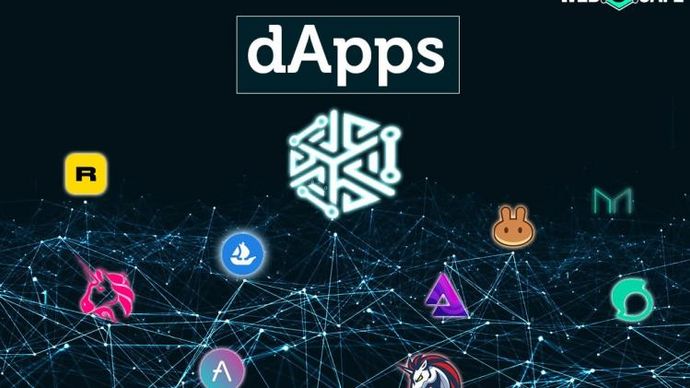How dApps could be the key to developing future technology? Get to know about the world of dApps
Decentralised applications are one of the blockchain industry's booming sectors.

Highlights
- dApps allow users to conduct transactions without requiring a central authority
- They use the Ethereum blockchain for data storage and smart contracts
- dApps have the potential to be the key to creating future technology
Decentralised applications (dApps) are growing rapidly, and they are one of the blockchain industry's fastest-growing segments. It is generating a new digital economy of peer-to-peer services, depriving monopolistic corporations of power.
Let's get into this explainer of what dApps are, their advantages, and how dApps could hold the key to creating cutting-edge technology.
What are dApps, and how do they differ from traditional applications?
Decentralised applications, also known as dApps, are digital applications that operate on a decentralised network rather than a single computer or server.It allows users to conduct transactions directly with one another without them depending on a central authority like governments.
Apart from transactions, it can also be used for other things. dApps are used in a variety of sectors, including gaming, real estate, and healthcare. Some of the most well-known and useful dApps in the gaming industry include Axie Infinity, DigiToads, and CryptoKitties, while well-known dApps in the real estate market are Vairt, RealBlocks, and RealT.
A typical centralised application, like Instagram or Twitter, runs on a computer system that is owned and managed by a centralised organisation, giving that organisation full control over the application. dApps, however, are not under the control of any organisation. They are based on blockchain technology that are capable of cryptocurrency as payment. One of the most popular blockchain networks for decentralised apps is Ethereum, with the first-ever implementation of smart contracts and the most reliable execution environments of any blockchain technology.
Benefits of dApps
Decentralised applications provide the following benefits:
Censorship resistance: dApps are censorship-resistant, which means they do not have to answer to governments or organisations. No government has the authority to prevent users from running a dApp. In other words, if Instagram or Twitter were on Ethereum, no one could ban your post or prevent you from posting. So that’s one of the prime uses of dApps.
Smart Contracts: dApps are only possible on smart contract networks. Well, smart contracts allow two individuals to write an agreement in code so that they don't have to rely on a third-party and can just trust the code. This means that Bitcoin cannot use dApps because it is only meant for promoting the sending of its native coin. Ethereum, on the other hand, can make use of smart contracts, which are sections of code that make up a programme that can be run to perform more complex tasks.
Social media: Decentralised social media networks can be built with dApps, enabling user interaction and content sharing without the requirement for a centralised authority. Some of the examples of decentralised social media networks are Steemit, Hive, Gab, Rumble, and Twetch.
Apart from this, dApps are utilised in the finance sector, healthcare, identity verification, and many more areas.
Why could dApps be the key to developing future technology?
Decentralised applications, or dApps, could play a significant role in advancing future technology for a number of reasons.
Decentralisation: One of the distinctive features of dApps is their decentralised nature. They are based on blockchain or other distributed ledger technologies that eliminate the need for mediators like centralised servers or authorities.
Open and Transparent: Because dApps are often open-source, their code is transparent and auditable by anybody. This encourages collaboration, innovation, and community growth. Openness and transparency also promoted dApp connectivity, enabling real-time data sharing and interaction between them. This could eventually result in the growth of large ecosystems of interconnected dApps that can provide greater value collectively than individually.
Flexibility and Innovation: dApps are very adaptable and may be built for a wide range of use cases, including banking, supply chain management, social networking, gaming, and more. Because blockchain and smart contracts are programmable, developers can construct customised logic, rules, and functions, enabling creative and unique applications that were not possible with old, centrally managed systems.
Conclusion
In conclusion, dApps have the potential to be the key to creating future technology because of their decentralisation, open transparent nature, and flexibility for invention. They have the potential to disrupt existing sectors, promote collaboration, and develop unique economic systems, all of which have the potential to speed up technological progress and determine the future of technology.
